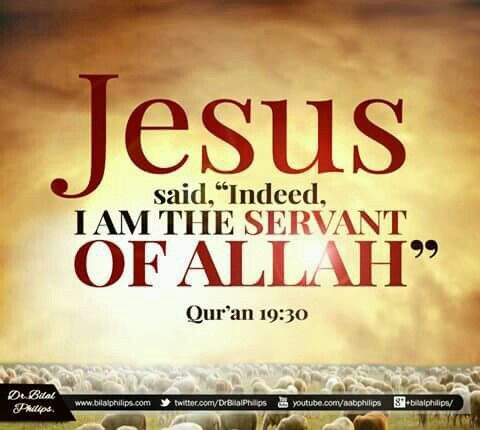First appeared at Institute of Islamic Information and Education.
What is the source of the Christian concept of the Trinity?
The three monotheistic religions – Judaism, Christianity, and Islam – all purport to share one fundamental concept: belief in God as the Supreme Being, the Creator and Sustainer of the Universe. Known as “tawhid” in Islam, this concept of the Oneness of God was stressed by Moses in a Biblical passage known as the “Shema”, or the Jewish creed of faith:
“Hear, O Israel: The Lord our God is one Lord.” (Deuteronomy 6:4)
It was repeated word-for-word approximately 1500 years later by Jesus, when he said:
“…The first of all the commandments is, Hear, O Israel; the Lord our God is one Lord.” (Mark 12:29)
Muhammad came along approximately 600 years later, bringing the same message again:
{And your God is One God: there is no God but He…} (Quran 2:163)
Christianity has digressed from the concept of the Oneness of God, however, into a vague and mysterious doctrine that was formulated during the fourth century. This doctrine, which continues to be a source of controversy both within and outside the Christian religion, is known as the Doctrine of the Trinity.
Simply put, the Christian doctrine of the Trinity states that God is the union of three divine persons – the Father, the Son and the Holy Spirit – in one divine being.
If that concept, put in basic terms, sounds confusing, the flowery language in the actual text of the doctrine lends even more mystery to the matter:
“…we worship one God in Trinity, and Trinity in Unity… for there is one Person of the Father, another of the Son, another of the Holy Ghost is all one… they are not three gods, but one God… the whole three persons are co-eternal and co-equal… he therefore that will be saved must thus think of the Trinity…” (excerpts from the Athanasian Creed)
Let’s put this together in a different form: one person, God the Father, plus one person, God the Son, plus one person, God the Holy Ghost, equals one person, God the What? Is this English or is this gibberish?
It is said that Athanasius, the bishop who formulated this doctrine, confessed that the more he wrote on the matter, the less capable he was of clearly expressing his thoughts regarding it.
How did such a confusing doctrine get its start?
 Trinity in the Bible
Trinity in the Bible
References in the Bible to a Trinity of divine beings are vague, at best.
In Matthew 28:19, we find Jesus telling his disciples to go out and preach to all nations. While this “Great Commission” does make mention of the three persons who later become components of the Trinity, the phrase “…baptizing them in the name of the Father, and of the Son, and of the Holy Ghost” is quite clearly an addition to Biblical text – that is, not the actual words of Jesus – as can be seen by two factors:
1- Baptism in the early Church, as discussed by Paul in his letters, was done only in the name of Jesus; and
2- the “Great Commission” was found in the first gospel written, that of Mark, bears no mention of Father, Son and/or Holy Ghost – (see Mark 16:15)
The only other reference in the Bible to a Trinity can be found in the Epistle of 1 John 5:7. Biblical scholars of today, however, have admitted that the phrase:
“…there are three that bear record in heaven, the Father, the Word, and the Holy Ghost: and these three are one”
…is definitely a “later addition” to Biblical text, and it is not found in any of today’s versions of the Bible.
It can, therefore, be seen that the concept of a Trinity of divine beings was not an idea put forth by Jesus or any other prophet of God. This doctrine, now subscribed to by Christians all over the world, is entirely man-made in origin.
The Doctrine Takes Shape
While Paul of Tarsus, the man who could rightfully be considered the true founder of Christianity, did formulate many of its doctrines, that of the Trinity was not among them. He did, however, lay the groundwork for such when he put forth the idea of Jesus being a “divine Son”.
After all, a Son does need a Father, and what about a vehicle for God’s revelations to man? In essence, Paul named the principal players, but it was the later Church people who put the matter together.
Tertullian, a lawyer and presbyter of the third-century Church in Carthage, was the first to use the word “Trinity” when he put forth the theory that the Son and the Spirit participate in the being of God, but all are of one being of substance with the Father.
A Formal Doctrine is Drawn Up
When controversy over the matter of the Trinity blew up in 318 between two churchmen from Alexandria – Arius, the deacon, and Alexander, his bishop – Emperor Constantine stepped into the fray.
Although Christian dogma was a complete mystery to him, he did realize that a unified church was necessary for a strong kingdom. When negotiation failed to settle the dispute, Constantine called for the first ecumenical council in Church history in order to settle the matter once and for all.
Six weeks after the 300 bishops first gathered at Nicaea in 325, the doctrine of the Trinity was hammered out. The God of the Christians was now seen as having three essences, or natures, in the form of the Father, the Son, and the Holy Spirit.